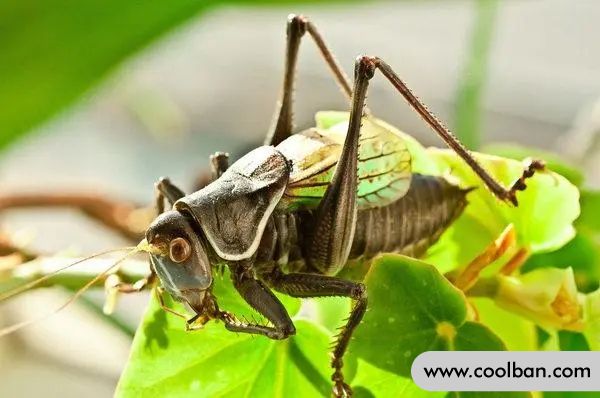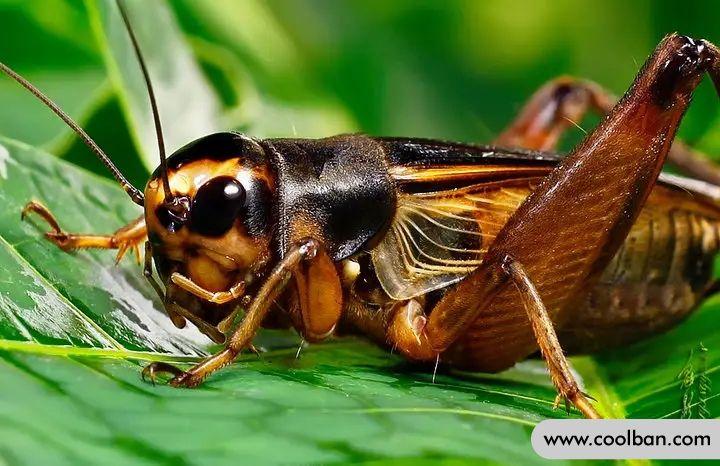How to feed crickets?
Crickets are seen by farmers as crop-destroying pests. Males tweet, fight, and kill each other. Females are larger, with naked pinhole or spear-shaped ovipositors and small wings.
In the cricket family, male and female crickets did not achieve "hundred years of friendship" through "free love". Which male cricket is brave and good at fighting, defeating other crickets of the same sex, thus gaining the possession of the female cricket, so the phenomenon of "polygamy" in cricket families is not uncommon.

Morphological characteristics of crickets
There are thousands of different subspecies of crickets, so individual differences are relatively large, but most crickets are small and medium-sized, and a few are larger. Body color is almost always dark brown or black.
Crickets have a round head, a broad chest and slender antennae. Chewing mouthparts, some with well-developed jaws, good at biting. The tarsus of each foot is 3, the forefoot and the midfoot are similar and of the same length; the hindfoot is well developed and good at jumping; the auditory organ on the tibia of the forefoot, the outer side is larger than the inner side.
The ovipositor is exposed, needle-shaped or spear-shaped, and consists of 2 pairs of tube flaps. Both males and females have a pair of tail hairs on the ventral end. The male ventral end has a pair of short rod-shaped abdominal spines. Females are larger, with exposed needle- or spear-shaped ovipositors and small wings. The male forewings have vocal organs, which consist of scrapers on the wing veins, friction veins, and sound mirrors. The front wing lifts and rubs side-to-side to vibrate the hinged mirrors and create a tone.
Crickets are mostly barrel-shaped, with thick hind legs and filamentous antennae longer than the body. There are two long tail lines at the end of the abdomen. If it is a female, there is also an ovipositor that is longer than the tail wire. There is another way to differentiate between males and females. Wings with obvious concave and convex patterns are male, and those with straight wings are female. Most notably, his auditory organs are on the forefoot.

Cricket living environment
Usually crickets prefer dry conditions, especially adult crickets. In the wild, they like to live in environments that are not easily seen by people, such as: under bricks, in dirt holes, and in grass.
Suitable for cricket breeding environment
Choose a ceramic or wooden box with a lid, lay a layer of sand on the bottom layer and a layer of loose soil and sand on the top layer.
Put a few stones or bricks in the tank, then place the tank in the aquarium, add water until the dotted line submerges part of the sand and maintain a constant water level to maintain soil moisture conditions and prevent eggs from drying out and dehydrating.
Use a constant temperature heater to control the water temperature at around 25 degrees Celsius and the humidity between 65%-75% to maintain the environment needed for the crickets to grow.
Crickets have no habit of taking care of each other. In order to compete for territory and mates, crickets will also attack and kill each other, so that crickets can live and work in peace and grow healthily. The stocking density of crickets should not be too high. Making sure your crickets have enough space and territory is the best way to keep them.

Points for raising crickets
Crickets are invertebrates that often appear in grass in summer. They like to tweet at night. They are omnivores and eat mainly plants, especially twigs, leaves and roots. Vegetables and fruits are also their favorites.
Crickets living in the wild generally feed on young shoots, leaves and roots, while crickets raised by humans will choose some foods in addition to a variety of fresh vegetables and fruits, and make them abundant. Feeding your crickets regularly and quantitatively every day can help your crickets grow healthier and stronger.
The main recipe for making cricket food is: 20% soybean meal, 35% couscous, 20% corn meal, 15% nonfat dry milk, 5% liver meal, 5% dry yeast; or 25% Cornmeal, 20% Soybean Meal, 25% Couscous, 15% Skim Milk Powder, 5% Dry Yeast, 10% fish meal. Put food in a container, grind it finely and mix well.
When feeding each day, be careful not to overfeed, just make sure the crickets eat all the food without any leftovers. In the breeding process, breeders can reasonably mix a variety of foods to meet the nutritional needs of the growth and development of crickets.
